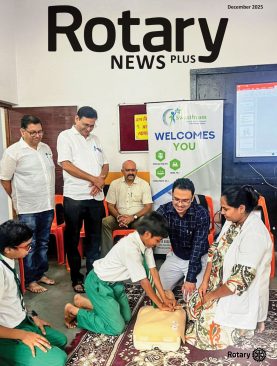
Compared to its counterparts in most parts of the world, the middle class in India lives quite comfortably, what with access to cheap domestic help that it has. True, this help is no longer full-time as it was when we were growing up many years ago. Now it is 90 per cent part-time. It was in this context that last month I had written about the mali, or gardener, problem. Gone are the days when gardens were so large that you needed a full-time gardener. Now it is only the car, regardless of its size, that requires a full-time driver. So most people I know have one, not only because they have the money and because the traffic is so horrible, but also because they are old and getting older and, above all, parking is such a great problem. Indeed, drivers are more useful as parking valets. I often wonder why more malls, shopping streets and hospitals don’t follow the five-star hotel mode of employing such attendants. When you consider it, a major reason for online shopping is that you don’t have to find a place to park when you go shopping. And, increasingly, it is also the parking charges that can, depending on location and the time of the day, vary from ₹50 to 200 an hour.

I stopped driving 20 years ago after a doctor cousin explained to me what exactly driving for over half-an-hour does to our blood pressure. She made me measure it when I came back from the office which was 45 minutes away then. Now it is 110 minutes away. So one working week, my wife, who is as good as any doctor when it comes to telling me what not to eat and drink, measured it. And lo! As my cousin had predicted, it was very high. Since I also used to smoke around ten cigarettes a day, my wife issued an edict: we will employ a driver.
Arching her eyebrows my wife said: “Isn’t that exactly like you journalists? All you fellows do now is Google, cut and paste and get paid more now for doing less work than you did 20 years ago.
Two weeks after he started working for us, my blood pressure was checked again. It was normal. So since then I have not driven, even though it now costs 20 times as much, up from ₹1,000 a month to ₹20,000. But as a percentage of our family earnings, the amount has actually come down even though I am now retired and my income has halved. Clearly, the supply of drivers has increased very fast.
That’s fine if you look at it only from the money point of view. But as always happens — mobile phone networks are an excellent example — when supply goes up very quickly, quality declines very sharply. It’s not just the driving skills that fall short; these guys don’t have any clue of the car’s mechanism. Thus, over the last 20 years we have had six drivers, each worse than the previous one but earning more. Our current chap drives extremely well, or has begun to, after constant hectoring by me from the passenger seat in the front. But he has no idea of how the car works. Thankfully, he can change a tyre now, but only after we had paid a workshop to teach him.
I pointed this out to my wife who, as a professor, has become accustomed to dealing with the declining quality of her students. She arched her eyebrows and asked “Isn’t that exactly like you journalists? All you fellows do now is Google and cut and paste and get paid more now for doing much less work than you did 20 years ago.”
She had, as usual, got to the core of the issue — that there was no difference between media people and drivers. I have decided to stop complaining about domestic help now.





